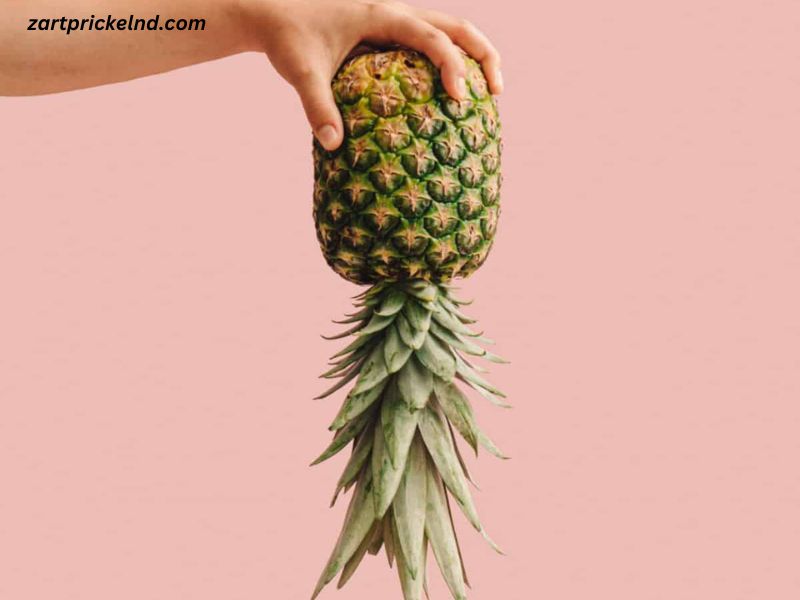Pineapples are a beloved tropical fruit, known for their sweet, tangy flavor and vibrant appearance. However, in recent years, the pineapple has taken on a more symbolic role in various subcultures. Specifically, the meaning of an upside-down pineapple has sparked curiosity and intrigue. For many, it is just a quirky design or a random fashion statement, but for others, it holds deeper, often surprising significance. From its historical context to its connection with modern-day symbolism, the upside-down pineapple is a motif that can carry multiple meanings, particularly within certain communities.
The Historical Context of Pineapples as Symbols
To understand why the upside-down pineapple has such a particular significance, it is essential to delve into the history of the pineapple itself as a symbol. Native to South America, the pineapple was brought to Europe in the 17th century. Its exotic nature and rare appearance made it a symbol of wealth, status, and luxury. The fruit was so highly prized that it became a coveted centerpiece at lavish banquets, sometimes rented out for social events. The pineapple’s association with opulence continued into the 18th and 19th centuries, when it was often displayed in the homes of the elite to signal affluence and hospitality.
In the United States, particularly during the colonial era, the pineapple continued to be a symbol of hospitality. The tradition of carving or displaying pineapples on the exterior of homes or in the form of intricate carvings was common in areas like New England. This symbolic use of the pineapple was linked to notions of welcome and friendliness. As the pineapple’s status as a symbol of wealth and welcoming hospitality grew, it would become more widely recognized and reinterpreted in various social contexts.
The Modern-Day Upside-Down Pineapple Symbolism
Fast forward to modern times, and the pineapple’s symbolism has evolved in ways that may surprise those unfamiliar with contemporary cultural trends. While the fruit is still associated with hospitality and warmth, the upside-down version of the pineapple has come to represent something entirely different, particularly in certain subcultures.
One of the most notable contemporary uses of the upside-down pineapple symbol is its association with the swinger community. For many people, the upside-down pineapple has become a discreet, yet recognizable, indicator that someone is open to swinging or other alternative lifestyles. This symbolism has gained traction through word-of-mouth, online forums, and discreet usage in social settings like parties, clubs, and even on items such as clothing or accessories.
The Swinger Symbolism
In swinger culture, the upside-down pineapple signifies that a person, couple, or household is open to meeting others for consensual non-monogamous activities, including swinging, threesomes, or other forms of sexual exploration. This usage of the upside-down pineapple is often subtle and intended to be understood only by those familiar with the code. As with many subcultures, symbols like the upside-down pineapple help members identify one another without explicitly stating their intentions.
The connection between the upside-down pineapple and the swinger community likely originated from informal social cues. For example, people who were open to swinging might place an upside-down pineapple in their shopping carts in public or wear a piece of clothing featuring the symbol to signal their interest. Over time, the upside-down pineapple became a widely recognized code for individuals seeking to connect with others who share similar desires.
The Role of Social Media and Online Communities
The increasing visibility of the upside-down pineapple within swinger and alternative lifestyle communities can also be attributed to the growth of social media and online dating platforms. Websites and apps like SLS (SwingLifestyle) and FetLife have made it easier for people to connect with others who share specific interests, and symbols like the upside-down pineapple allow for an additional layer of anonymity. It’s not just limited to private parties or online forums either. In fact, you may even encounter the upside-down pineapple at certain restaurants, hotels, or cruises that cater specifically to people in the lifestyle.
For some, the upside-down pineapple may also be found in more playful contexts, where it doesn’t necessarily have a direct connection to swinging. For example, a couple may wear an upside-down pineapple pin as a quirky fashion statement, or it could be used in a more innocent way, such as in decor for a tropical-themed party or event. However, when used in these contexts, the upside-down pineapple is often intended to remain ambiguous.
The Upside-Down Pineapple in Other Cultures
While the symbol of the upside-down pineapple is largely associated with the swinger community, it is important to note that the pineapple still carries its traditional meanings in many parts of the world. In addition to symbolizing wealth and hospitality, the pineapple is sometimes linked with religious or spiritual significance.
In certain indigenous cultures in the Caribbean, where the pineapple is native, the fruit is seen as a symbol of fertility, abundance, and vitality. The shape of the pineapple, with its spiky top and sweet interior, was believed to represent the balance between the earthly and divine. In this context, an upside-down pineapple might be interpreted as a symbol of transformation or a shift in perspective. It may represent a challenge to established norms or a new understanding of balance, a meaning that contrasts with the more contemporary interpretations in swinger culture.
In other parts of the world, the pineapple is still viewed as a symbol of welcoming and good fortune. For example, in parts of Asia, particularly in Chinese culture, the pineapple is seen as a symbol of wealth and prosperity. The fruit’s Cantonese name, “ong lai,” sounds like the word for “prosperity arrives,” making it a popular gift during the Chinese New Year and other celebratory occasions. The idea of turning the pineapple upside down, in this case, might symbolize a disruption of fortune, either for good or bad, depending on the context.
The Pineapple as a Fashion and Cultural Icon
Beyond its symbolic meanings, the pineapple, and especially the upside-down pineapple, has found its way into pop culture, fashion, and even interior design. The fruit is frequently used as a design element in fashion collections, particularly in beachwear, summer clothing, and accessories. The upside-down pineapple, however, has taken on a slightly more niche role, often used by brands that cater to particular subcultures, including those that focus on alternative or free-spirited lifestyles.
T-shirts, hats, pins, and jewelry featuring the upside-down pineapple can often be seen at music festivals, LGBTQ+ events, and other gatherings where people are more likely to embrace unconventional fashion. These items are not necessarily indicative of the wearer’s sexual orientation or practices but may instead be a playful nod to the fruit’s evolving symbolism.
Furthermore, the upside-down pineapple has appeared in various TV shows, movies, and books, where it is sometimes used to indicate a character’s hidden desires or interests. This usage in the media has only fueled its popularity and solidified its place in popular culture.
Conclusion
The upside-down pineapple is a fascinating example of how symbols evolve over time, taking on new meanings and interpretations. From its historical role as a symbol of wealth and hospitality to its modern-day association with the swinger community, the upside-down pineapple illustrates the shifting nature of cultural symbols. It serves as a reminder that even something as simple as a piece of fruit can take on profound significance depending on the context in which it is used.
For some, the upside-down pineapple is an innocent design choice or a quirky fashion statement. For others, it represents an open invitation to explore alternative lifestyles. Regardless of its specific meaning, the upside-down pineapple has become an iconic symbol in modern culture, one that continues to spark curiosity and conversation. Whether it’s displayed on a shopping cart, worn as a pin, or seen in the context of a secretive social gathering, the upside-down pineapple remains a powerful symbol of the ever-changing dynamics of cultural expression.



